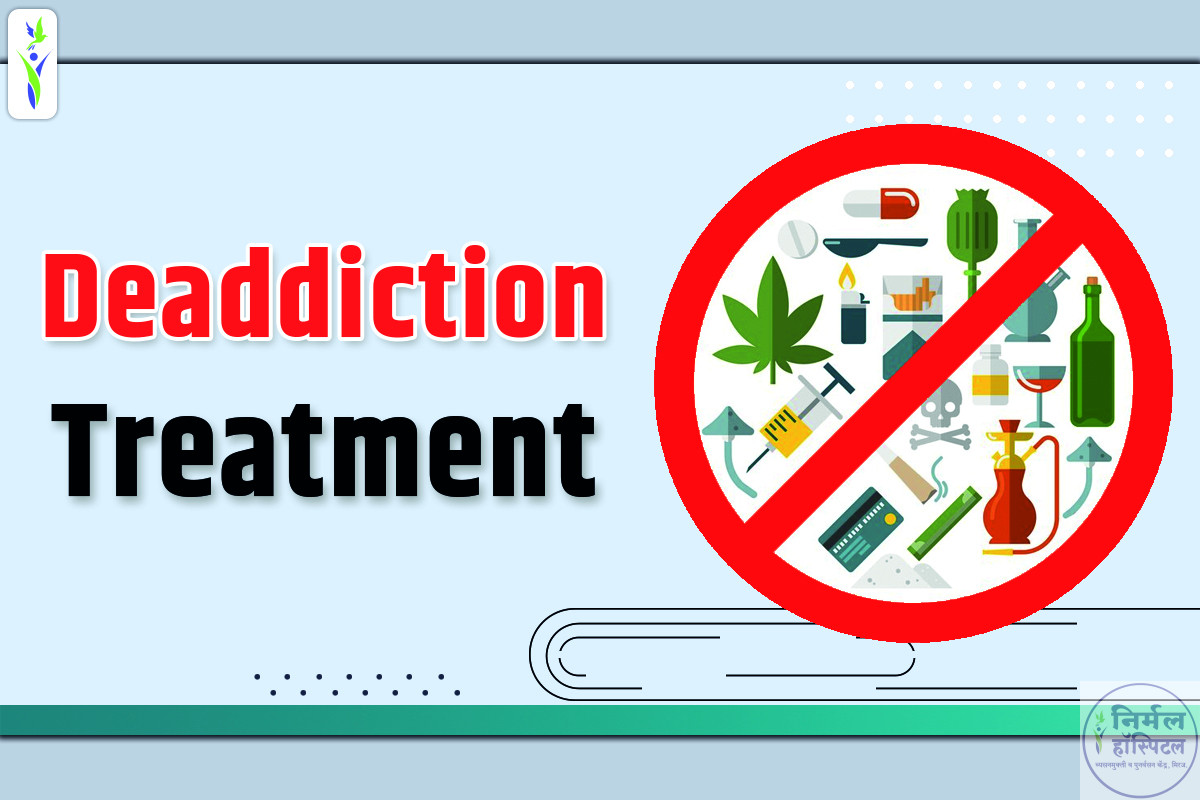SUBSTANCE (DRUGS) USE ,ABUSE AND DEPENDENCE:-
Designated classes of pharmacological agents (i.e. Substance) :
1) Alcohol
2) Anabolic steroids
3) Caffeine
4) Cannabis
5) Cocaine
6) Hallucinogens
7) Inhalants
8) Nicotine
9) Opioid
10) Drugs – Sedatives, Hypnotism and anxiolytics
* Physical Dependence – Refers to the physical (physiological) effects of multiple episodes of substance use. i.e. Ideas of tolerance or withdrawal appears in criteria for dependence.
* Intoxication – Term is used for a reversible non dependent experience with a substance that produces impairment.
* Psychological dependence – also referred to as habituation, is characterized by a continuous or intermittent craving for the substance to avoid a dysphonic state.
* Substance withdrawal – development of substance specific syndrome due to the cessation or reduction in substance use.
DSM IV Diagnostic criteria for substance Dependence
Manifested by three or more of the following occurring in any time in 12 months period
1) Tolerance – Markedly diminished effect with continued use of the same amount of substance a need for markedly increased amounts of substance to achieve intoxication or desired effect.
2) Withdrawal Symptoms – These symptoms are variable depending upon the substance.
3) Substance is often taken in larger amounts or over a longer period.
4) There is a persistent desire or unsuccessful efforts to cut down or control substance use.
5) Great deal of time is spent in activities necessary to obtain. The substances e.g. driving long distances.
6) Important social, occupational or recreational activities are given up or reduced because of a substance use.
7) Substance use is continued despite knowledge of having persistent or recurrent physical or psychological problem.
Diagnostic criteria for alcohol Intoxication:-
1) Recent injection of alcohol
2) One (or more) signs – slurred speech In coordination Unsteady gait Nystagmus (Antegrade grade amnesia) – Impairment in attention or memory Stupor or coma
3) Significant maladaptive behaviour or psychological changes. (i.e. inappropriate sexual or aggressive behaviour mood, liability, impaired judgment, impaired social or occupational functioning)
Alcohol withdrawal : –
1. Classical signs – tremulousness i.e. shakes or jitters (although spectrum of symptom may expand to psychotic and perceptual symptoms i.e. delusions and hallucinations)
2. Tremors – develops 6-8 hrs after cessation of drink
3. Delusion, hallucinations – begin in 8-12 hrs.
4. Delirium tremens during 72 hrs.
5. Conditions which can predispose to or aggravate withdrawal symptoms – include fatigue, malnutrition, physical illness and depression.
6. Seizures – Seizures (Rum fits) – begin in 12-24 hrs.
7. Seizures are stereotyped, generalized and tonic Clonic in character.
8. Patients often have more than one seizure 3-6 hrs after 1st seizure.
9. Status epileptics is relatively rare & occurs in less than 3 % of patients.
10. Rx of Rum fits – Usually anticonvulsant is not required for withdrawal seizures. Anticonvulsant if stated immediately – anticonvulsant should be discontinued once the cause of seizures is recognized.
Diagnostic criteria for alcohol withdrawal
- A) Cessation or reduction in alcohol use
- B) Two or more of the following symptoms are seen –
1) Automatic hyper activity (e.g. sweating or pulse rate greater than 100)
2) Increased hand tremor
3) Insomnia
4) Nausea or vomiting
5) Transient visual, tactile or auditory hallucinations or illusions
6) Psychomotor agitation
7) Anxiety
8) Grand mal seizures
NICOTINE:-
- Tobacco
- Gutkha
- Cigarette
- Bidi
- Mawa
- Tapkir
Nicotine withdrawal :
A) Daily use of nicotine for at least several weeks.
B) Abrupt cessation of nicotine use or reduction in the amount of nicotine used, followed with in 24 hours by 4 or more of the following signs
1) Dysphonic or depressed mood
2) Insomnia
3) Anxiety
4) Difficulty in concentrating
5) Irritability, frustration or anger
6) Restlessness
7) Decreased heart rate
8) Increased appetite or weight gain
Phases of treatment for Alcohol Dependence:-
- Pre-Treatment :
1. Identification
2. Motivational Interviewing
3. Role of family members and physicians - Detoxification :
1. Diazepam (20-60 mgs Per day) or Chlordiazepoxide (50-60 mgs. per day)/Lorazepam
2. Thiamine (or as part of Vitamin B-Complex) 50 mgs. Thrice a day orally or 100 mgs. IM daily
3. Supportive Measures viz fluids, electrolytes etc. - Intensive Treatment :
1. Brief Intervention / Simple advice
2. Disulfiram (only with consent) Anti craving drugs (NTX, Acamprosate)
3. Group Therapy
4. Family Therapy
5. Behaviour Therapy - Posttreatment / Aftercare:
1. Treatment contact
2. Relapse Prevention
3. Social Rehabilitation
4. Occupational Rehabilitation
5. Continued Supervision
TREATMENT REGIMENS FOR ALCOHOL WITHDRAWAL
* Fixed-scheduled dosing
* Chlordiazepoxide orally every 6h for 3d (50-100 mg per dose day 1, then 25-50 mg per dose)
* Diazepam 5-20 mg orally every 2h while symptomatic until resolution
* For delirium tremens Diazepam 10 mg intravenously, then 5 mg every 5 min until calm but awake.
* If unable to take oral medication or in the presence of hepatic synthetic dysfunction (hypoalbuminemia, elevated prothrombin time), intramuscular, sublingual, oral or intravenous (for delirium tremens only) lorazepam 1-4 mg may be substituted. Oral oxazepam 30-60 mg or lorazepam may be substituted in the elderly and those at risk of excessive sedation or its complications.
* All patients should receive thiamine 50-100 mg daily.
* Treatment of Alcohol Withdrawal Seizures
* The seizure generally resolves spontaneously. Benzodiazepines, carbamazepine, and probably Phenobarbital prevent seizures, but phenytoin is ineffective preferably diazepam, chlordiazepoxide, or lorazepam, all shown to prevent initial and recurrent seizures.
* Treatment of Delirium Tremens – 20-50 % of patients die eventually if not treated, there is 5-10 % mortality even with treatment .
* It requires immediate hospitalization in untreated cases.
* Treatment of choice is intra venous diazepam (10 mg every 20 minutes till patient is sedated or signs and symptoms of withdrawal subsides) * Or IV lorazepam 2-8 mg
Treatment for alcohol dependence continues
* Anti craving agents – * Topiramate- 50-200 mg,
* Acamprosate – 333 mg 2 tab TID
* Carbamazepine – 300 – 1000
* Naltrexone – An analogue of naloxone, is a relatively pure opioid antagonist – with highest affinity of for the mu-opiate receptor type.
* Naltrexone reduced alcohol craving, days of drinking per week, and the rate of relapse among those who drank.
When administered at 50 mg/day for 3 months.
Treatment For Alcohol Dependence Continues
* Selective Serotonergic Reuptake Inhibitors- Fluoxetine 20 mg, Escitalopram 10,20 mg. Sertraline 25,50 mg Fluoxamine-50 mg
* Topiramate – Antiepileptic and adjuvant mood stabilizer. It inhibits release of dopamine in meso-cortico-limbic pathway by augmenting GABA and inhibiting specific glutaminergic pathway. It also inhibits carbonic anhydrase enzyme Dose is 25 to 300 mg. per day.
* Ondansetron – a selective 5HT3 receptor antagonist. It reduces urge to intake
* Combinations of above drugs can be used.
TREATMENT OF SPECIFIC COMORBID CONDITIONS- about 50 % cases
* Alcoholic patients with major depression.
* Alcoholic patients with anxiety depression.
* Alcoholic patients with Somatoform disorders.
* Alcoholic patients with Obsessive compulsive disorder.
* Alcoholic patients with Dissociative disorder.
* Alcoholic patients with Mood disorders/Swings- mania and depression.
* Alcoholic patients with Personality disorders.
* Alcoholic patients with Schizophrenia / other psychotic disorder.
* Alcoholic patients with other substance dependence
A] Pharmacotherapy For Nicotine Dependence
* The nicotine gum : is usually used during the first few months of a quit attempt.
* Nicotine gum is available in 2 and 4 mg.
* Most patients can start reducing use of gum after 3-4 weeks.
B] Nicotine Therapy:-
* Bupropion : The mechanism of action is unknown
* Action- Enhancing dopamine levels in the mesolimbic system
C] Other Pharmacotherapies For Nicotine Dependence
Includes agents that make smoking aversive (e.g. silver acetate) clonidine, blocking agents (e.g. mecamylamine, naltrexone) and medications to decrease withdrawal problem or replace the positive effects of nicotine (e.g. anxiolytics, antidepressants, stimulants, anorectics)
Management of Opioid Abuse and Dependence:-
* Opioid Agonist Pharmacotherapy
* Methadone : Methadone is a m opioid receptor agonist and produces the typical morphine like effects in people, including euphoria, drowsiness, analgesia, respiratory depression nausea, vomiting. constipation, itching and constriction of pupils. Methadone is 20-30 mg, with 5 to 10 mg increases every other day as tolerated. usual dose of ranges from 30-100 mg.
* Levomenthol acetate (LAAM) – – is derivative of methadone. Its long duration of action (48-72 hrs) allows dosing at 48-72 hr interval for opioid maintenance treatment.
* Buprenorphine : buprenorphine, is a partial m opioid against and a weak k opioid antagonist . Buprenorphine formulated as a sublingual tablet is available alone or in a combination tablet containing Buprenorphine and Naloxone in a ratio of 4:1
* Opioid antagonist pharmacotherapy Naltrexone, an opioid antagonist blocks opioid receptors competitively. Single daily dose of 50 mg, doses of 100-150 mg can block opioid effects for 48-72 hrs.
* Psychotherapy– Cognitive-behavioural therapy, relapse prevention and psychotherapy (individual, family and group therapy)









Leave a Reply